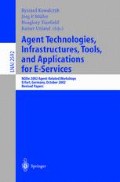Abstract
The design of advanced driver assistance systems always aims at enabling the driver to master today’s traffic in a more safe and comfortable way. In order to judge the risks in a situation and initiate precautionary actions, future systems have to possess the capability to predict the behavior of surrounding traffic participants. This paper outlines an approach to predictive situation analysis for driver assistance systems and discusses one key issue in more detail - namely the predictive action recognition. In this context, a situation representation formalism will be introduced that exploits time as a compact physical measure. Furthermore, it will be shown how probabilistic networks can be used for reasoning about driver (action) intentions and how such networks can help to cope with uncertainty resulting from inaccuracy in models and sensor data. First results are shown in simulation for highway overtake scenarios. In the situations presented the prediction for an upcoming lane change can be made by the assessment of the time gaps to the nearest neighbors of that specific vehicle.
Access this chapter
Tax calculation will be finalised at checkout
Purchases are for personal use only
Preview
Unable to display preview. Download preview PDF.
References
J.F. Allen, Towards a theory of action and time, Artificial Intelligence 23, 123–154, 1984
Bando, Masako, Hasebe, Nakanishi, Nakayama, Shibata, Sugiyama Phenomenolical Study of Dynamical Model of Traffic Flow Physical Review E, 51:1–18, 1995
I. Dagli, D. Reichardt, Motivation-based Approach to Behaviour Recognition, In Proceedings of the IEEE Intelligent Vehicle Symposium, Versailles, 2002
D. Ehmanns, Simulation Model of Human Lane Change Behaviour, Technischer Bericht, Institut für Kraftfahrwesen, Aachen, 2001
W. Fastenmeier, H. Gstalter Ulf Lehnig, Analyse von Spurwechselvorgängen im Verkehr, Zeitschrift für Arbeitswissenschaft, (1/2001), Darmstadt, 2001
J. Forbes, N. Oza, R. Parr, S. Russel, Feasibility study of fully autonomous vehicles using decision-theoretic control, Final Report, Computer Science Division, University of California, Berkley, 2000
A. Hiller, Mikroskopische Modellierung der Längsdynamik von Fahrer-Fahrzeug-Einheiten im Stadtverkehr Diplomarbeit, Institut für Systemdynamik und Regelungstechnik, Universität Stuttgart, 1999
J. Kienzle, Analyse von Einzelfahrzeugdaten, Diplomarbeit, Institut für Systemdynamik und Regelungstechnik, Universität Stuttgart, 2000
U. Kjaerulff, A computational scheme for reasoning in dynamic probabilitic networks, Proceedings of the Eights Conference on Uncertainty in Artificial Intelligence, p. 121–129, 1992
D. Manstetten, W. Krautter, T. Schwab, Traffic Simualtion Supporting Urban Control System Development, 4th World Congress on Intelligent Transportation Systems, 1997
R. Moeck-Hecker, Wissensbasierte Erkennung kritischer Verkehrsituationen, Dissertation, Düsseldorf, VDI Fortschritt-Berichte, Reihe 12, Nr. 209, VDI-Verlag, 1994
J. Pearl, Probabilistic Reasoning in Intelligent Systems, Systems Networks of Plausible Interference, ed. Morgan Kaufmann, 1988
D. Spiegelhalter, P. Dawid, S. Lauritzen, R. Cowell, Bayesian Analysis in Expert Systems Statistical Science, Vol. 8, No. 3, 1993
R. Wiedemann, Simulation des Straßenverkehrsflusses, Band 8 der Reihe Schriftenreihe des Instituts für Verkehrswesen an der Universität Karlsruhe, Universität Karlsruhe, 1974
M. Zeller, Planerkennung im Straßenverkehr, Dissertation, VDI Fortschritt-Berichte, Reihe 12, Nr. 286, VDI-Verlag, 1996
Author information
Authors and Affiliations
Editor information
Editors and Affiliations
Rights and permissions
Copyright information
© 2003 Springer-Verlag Berlin Heidelberg
About this paper
Cite this paper
Dagli, I., Brost, M., Breuel, G. (2003). Action Recognition and Prediction for Driver Assistance Systems Using Dynamic Belief Networks. In: Carbonell, J.G., Siekmann, J., Kowalczyk, R., Müller, J.P., Tianfield, H., Unland, R. (eds) Agent Technologies, Infrastructures, Tools, and Applications for E-Services. NODe 2002. Lecture Notes in Computer Science(), vol 2592. Springer, Berlin, Heidelberg. https://doi.org/10.1007/3-540-36559-1_15
Download citation
DOI: https://doi.org/10.1007/3-540-36559-1_15
Published:
Publisher Name: Springer, Berlin, Heidelberg
Print ISBN: 978-3-540-00742-5
Online ISBN: 978-3-540-36559-4
eBook Packages: Springer Book Archive

